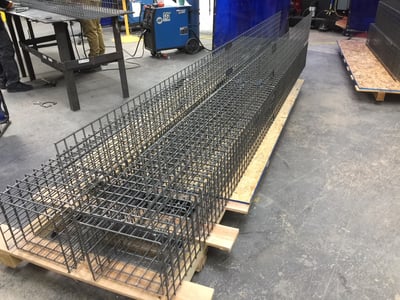 In many offices around the world, managing the cables that physically connect different computers and other technology assets can be a major hassle. The solution that many private homes use—tying cables together with zip-ties or other materials—isn’t viable in a professional office setting because it still leaves a tripping hazard on the floor. Running cables along the ceiling is also not an attractive solution, either, because it leads to a bunch of unsightly wire clutter where everyone can see it.
In many offices around the world, managing the cables that physically connect different computers and other technology assets can be a major hassle. The solution that many private homes use—tying cables together with zip-ties or other materials—isn’t viable in a professional office setting because it still leaves a tripping hazard on the floor. Running cables along the ceiling is also not an attractive solution, either, because it leads to a bunch of unsightly wire clutter where everyone can see it.
This is why many modern offices embed their cables into their access floors. However, simply running wires under the floor at random leads to a disorganized mess that is hard to untangle if a computer or other asset ever has to be removed or relocated. This, in turn, leads to delays and extra costs.
To simplify cable management for cables running under the access floor (and thus save time and frustration later on), many offices use specially-made stainless steel cable access trays. These trays are installed beneath a computer room’s access flooring system between the access floor and the actual floor.
Why stainless steel trays? Specifically, to prevent rusting from exposure to the dirt and other contaminants that may collect underneath the office’s access flooring system. After all, these trays are hidden out of sight, and so may go months at a time without being cleaned or cared for.
Building a Better Cable Access Tray
A little while ago, a company approached Marlin Steel looking for a set of stainless steel cable access trays to integrate with their access flooring system. The specifications given by the client were unusually large by the standards of flooring access systems, and their previous supplier couldn’t quite manage the scale.
While this custom wire form’s design didn’t demand as much precision as some others on a wire-for-wire basis, the sheer size of the wire forms meant that any minor deviation could drastically alter the shape of the completed product.
So, to ensure that the cable access trays would be as close to the client’s specifications as possible, Marlin Steel’s production team used a variety of computer-controlled manufacturing robots to handle the primary tasks of assembling the wire forms.
Wire-bending robots were able to extrude and straighten precise lengths of stainless steel wire from the wire spools—achieving precise cuts to make sure all of the wires were of consistent length to prevent deformations that would lead to rejected parts. For the shorter wires that would create the “U” shape to hold the cables, these same wire bending robots were able to achieve consistently-placed bends that made achieving a meters-long, straight wire form that would easily meet the client’s required tolerances.
Resistance welding machines, like Marlin’s MFDC welder, were needed to ensure that each and every weld on the frame of the wire form could be completed with minimal stress. This helped to ensure that the steel wires wouldn’t be bent out of shape by the numerous welds needed to keep the large wire form secure.
The IDEAL MFDC welder’s 10’ x 4’ table was particularly useful for welding the oversized wire forms together—a smaller weld table would not have been able to handle the job.
In the end, the custom stainless steel cable access trays proved to be a fairly simple job for Marlin’s production team. It only took a couple of weeks to go from initial order to the client having a full set of access trays in their offices.
Need a custom wire form engineered and delivered fast? Contact the experts at Marlin Steel today to learn how you can get “Quality, Engineered Quick®” today!



.gif)


